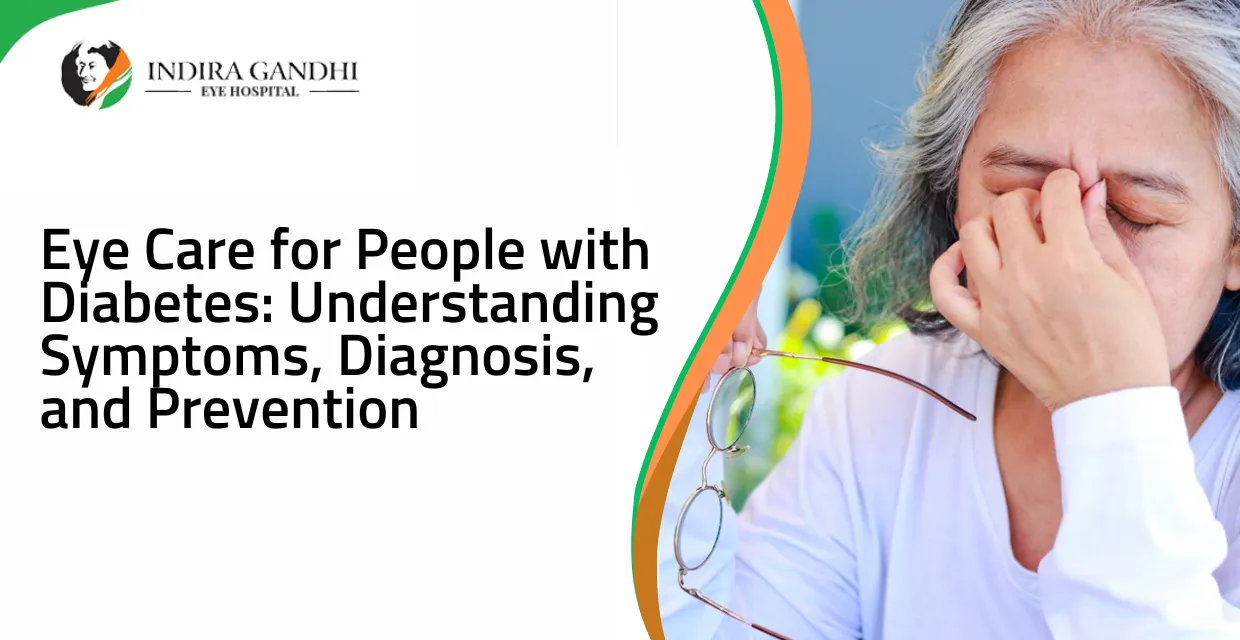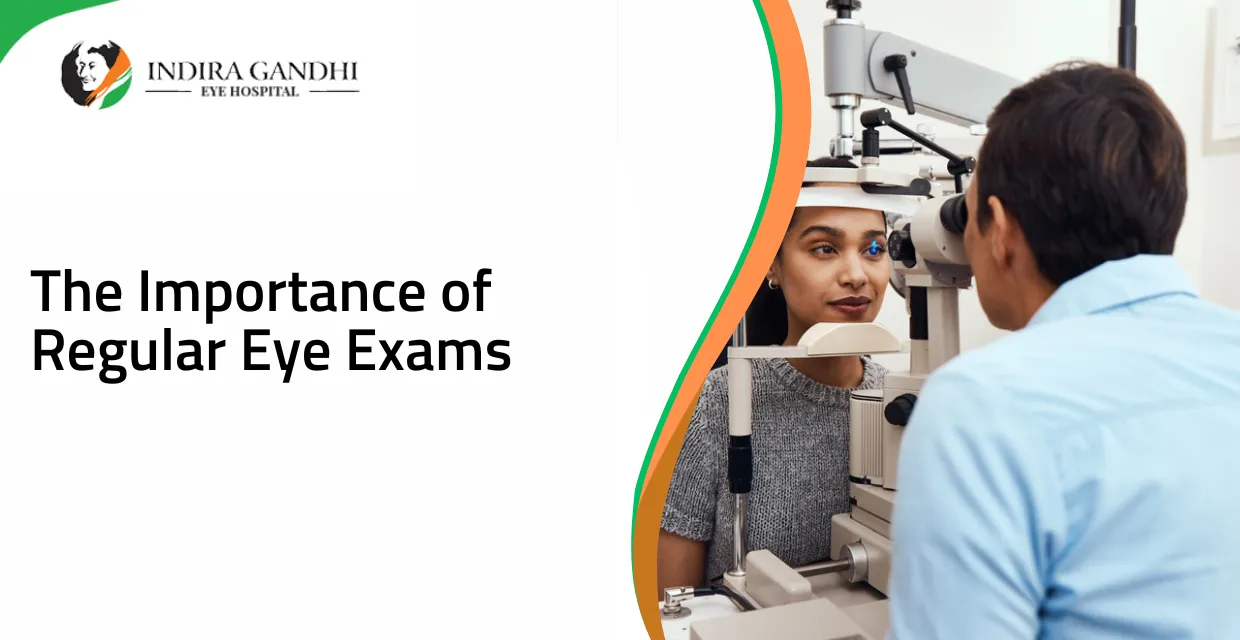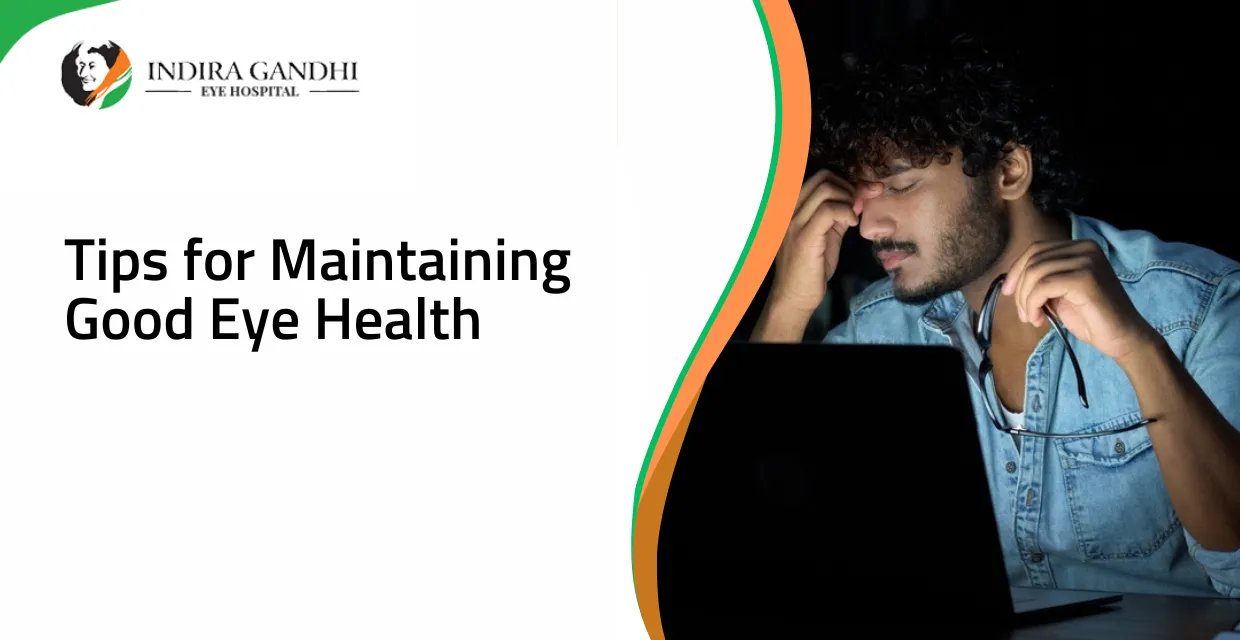Diabetes is a chronic condition that affects millions of people worldwide. While the condition can lead to various health problems, one of the most significant concerns for individuals with diabetes is their eye health. Diabetes can cause eye problems such as diabetic retinopathy, cataracts, and glaucoma, which can lead to vision loss if left untreated.
Importance of Eye Care for People with Diabetes
The importance of eye care for people with diabetes cannot be overstated. According to Indra Gandhi Eye Hospital, diabetes is one of the leading causes of blindness in people aged 20 to 74 years old. Individuals with diabetes are at a higher risk of developing eye problems due to high blood sugar levels, which can damage the blood vessels in the eyes. However, with proper eye care and management of blood sugar levels, individuals with diabetes can prevent or delay the onset of eye problems and maintain good vision.
Symptoms of Eye Problems in Diabetes
One of the challenges of eye problems associated with diabetes is that they often do not show any symptoms in the early stages. However, as the condition progresses, some of the symptoms that may indicate eye problems include:
Blurred vision: This is a common symptom of diabetic retinopathy, which occurs when high blood sugar levels damage the blood vessels in the retina.
Floaters or spots in vision: These may indicate bleeding in the retina, which can occur due to diabetic retinopathy.
Sudden loss of vision: This may occur due to a detached retina, which can happen in the advanced stages of diabetic retinopathy.
Difficulty seeing at night: This may occur due to cataracts, which can develop as a result of high blood sugar levels.
Seeing flashing lights: This may indicate a retinal tear, which can occur due to diabetic retinopathy.
Symptom | Associated Cause |
Blurred vision | Damage to blood vessels in the retina due to high blood sugar levels |
Floaters or spots in vision | Bleeding in the retina due to diabetic retinopathy |
Sudden loss of vision | Detached retina in the advanced stages of diabetic retinopathy |
Difficulty seeing at night | Development of cataracts as a result of high blood sugar levels |
Seeing flashing lights | Retinal tear caused by diabetic retinopathy |
Diagnosis of Eye Problems in Diabetes
Regular eye examinations are crucial for individuals with diabetes to identify and manage any eye problems that may arise. The American Diabetes Association recommends that individuals with diabetes undergo a comprehensive eye examination at least once a year. The examination may include a visual acuity test, a dilated eye exam, and tonometry to measure intraocular pressure.
During a dilated eye exam, an eye doctor will administer eye drops to dilate the pupils, allowing them to examine the retina and other parts of the eye more thoroughly. The doctor will also check for signs of diabetic retinopathy, such as abnormal blood vessels, swelling, and bleeding.
Prevention of Eye Problems in Diabetes
Prevention is crucial in managing eye problems in individuals with diabetes. Here are some tips to help prevent eye problems:
Control Blood Sugar Levels: High blood sugar levels can damage the blood vessels in the eyes, leading to eye problems. Keeping blood sugar levels under control can reduce the risk of eye problems.
Control Blood Pressure and Cholesterol Levels: High blood pressure and cholesterol can also damage the blood vessels in the eyes. Managing these conditions can reduce the risk of eye problems.
Quit Smoking: Smoking can damage the blood vessels in the eyes and increase the risk of eye problems.
Regular Eye Examinations: As mentioned earlier, regular eye examinations are essential for early detection and management of eye problems.
Manage Overall Health: Maintaining a healthy lifestyle that includes a balanced diet, regular exercise, and stress management can help prevent eye problems.
Prevention Tips | Additional Tip |
Control Blood Sugar Levels: Maintain proper blood sugar levels to prevent damage to blood vessels in the eyes. | Monitor your carbohydrate intake and follow a balanced diabetic diet. |
Control Blood Pressure and Cholesterol Levels: Manage blood pressure and cholesterol to reduce the risk of eye problems. | Engage in regular physical activity to improve overall cardiovascular health. |
Quit Smoking: Avoid smoking, as it can damage the blood vessels in the eyes and increase the risk of eye problems. | Seek support from a healthcare professional or join smoking cessation programs to assist in quitting. |
Regular Eye Examinations: Schedule routine eye examinations to detect and manage any eye problems at an early stage. | Wear sunglasses with UV protection when outdoors to shield your eyes from harmful rays. |
Manage Overall Health: Adopt a healthy lifestyle, including a balanced diet, regular exercise, and stress management, to prevent eye problems. | Take regular breaks from digital screens and practice eye exercises to reduce eye strain. |
Conclusion:
In conclusion, eye care is critical for individuals with diabetes. Regular eye examinations, early detection, and proper management of eye problems can help prevent serious complications such as vision loss, blindness, and other eye-related health issues. People with diabetes should make eye care a priority and work closely with their healthcare providers to maintain good blood sugar control, blood pressure, and cholesterol levels. Additionally, lifestyle changes such as regular exercise, healthy eating, and not smoking can also play an important role in promoting eye health.





